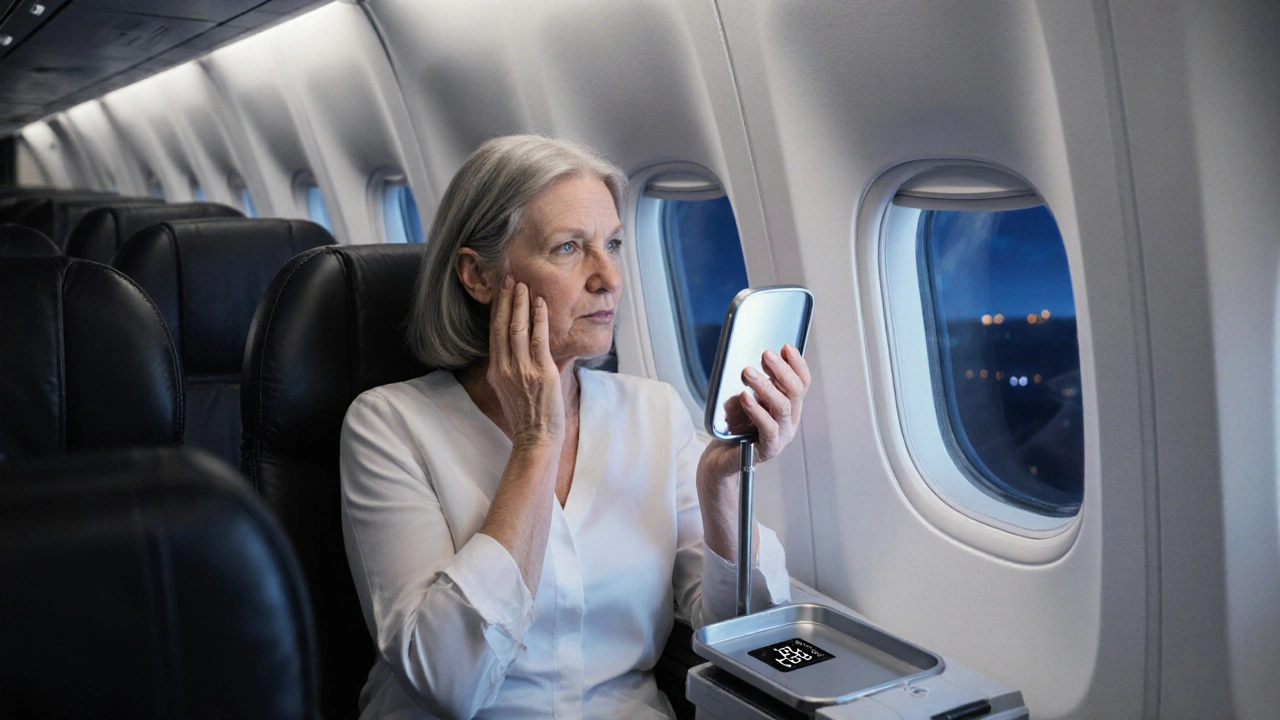Air Travel Wrinkles: How Flights Age Your Skin & Simple On‑The‑Go Fixes
Discover how cabin air, pressure, and UV accelerate wrinkles and get easy, travel‑friendly skin tips to stay fresh from takeoff to landing.
Continue ReadingWhen planning a trip, most people pack clothes, shoes, and a camera, but travel skincare, the set of practices that keep your skin safe and comfortable while you move from one destination to another, often gets left behind. Also known as skin care for travelers, it includes everything from choosing the right sunscreen to packing a friction‑free moisturizer that won’t spill in your bag.
One of the first pillars of sun protection, the use of sunscreen, clothing, and shade to block harmful UV rays is knowing the UV index at your destination. A high UV index means you need a SPF 30 or higher, broad‑spectrum product and re‑application every two hours, especially after swimming or sweating. Pairing sunscreen with a UV‑blocking hat or lightweight long‑sleeve shirt creates a double layer of defense that reduces the risk of sunburn, premature aging, and even skin cancer.
Another core component is moisturizer, a product that adds water to the skin and locks it in with barrier‑forming ingredients. Air‑conditioned planes, dry hotel rooms, and long flights dehydrate the skin, leaving it flaky and tight. Look for moisturizers that contain hyaluronic acid, glycerin, or ceramides—these draw water into the outer layer and repair the skin barrier without feeling heavy. Travel‑size containers or refillable ampoules make it easy to stay hydrated without taking up much luggage space.
The skin barrier, the outermost layer of skin that protects against irritants, microbes, and moisture loss acts like a shield, and travel can stress it in several ways. Changes in climate, exposure to pollutants, and the occasional bout of sweat can compromise barrier function, leading to redness, itch, or breakouts. Reinforcing the barrier with products that contain niacinamide or panthenol helps calm inflammation and keeps the skin resilient. When you combine a strong barrier with proper sun protection and moisturization, you create a synergistic system that defends against most travel‑related skin woes.
Travelers also face specific skin challenges such as ringworm, athlete's foot, and allergic reactions to new foods or environments. The "Best Ringworm Prevention Strategies for Travelers" article in our collection shows how to pack antifungal powder and maintain foot hygiene, while the "Screen Time Effects" guide explains why limiting digital eye strain can reduce periorbital skin issues. Knowing which over‑the‑counter creams are safe to bring abroad—like a mild hydrocortisone for allergic rashes—prevents a small irritation from turning into a major setback.
Finally, convenience matters. Choose multi‑use products, such as a tinted sunscreen that also evens skin tone, or a travel‑friendly lip balm with SPF. These combo items cut down on the number of bottles you need, lower the chance of spills, and still deliver the essential ingredients your skin needs. When you pack smart, you free up space for the experiences you actually came for.
With these fundamentals in mind—sun protection, barrier‑supporting moisturization, and targeted solutions for common travel skin issues—you’re ready to face any climate, altitude, or adventure without compromising your skin health. Below you’ll find a curated set of articles that dive deeper into each topic, offering step‑by‑step guides, product comparisons, and safety tips to keep your skin looking and feeling its best throughout every journey.

Discover how cabin air, pressure, and UV accelerate wrinkles and get easy, travel‑friendly skin tips to stay fresh from takeoff to landing.
Continue Reading